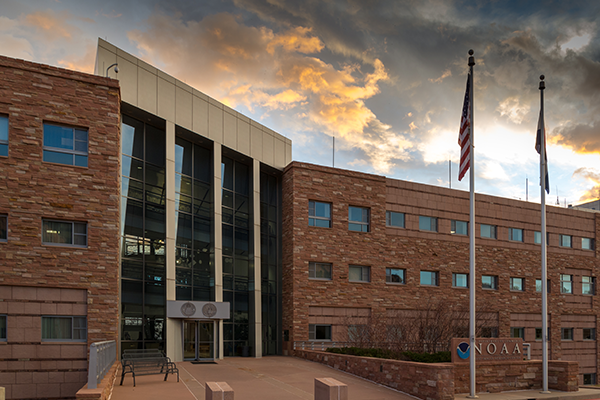
Why can’t models get the mesoscale atmospheric spectrum right?
Aaron Wang
NOAA PSL
Tuesday, May 19, 2020, 2:00 pm
Abstract
Despite decades of development, global atmospheric models continue to have trouble in capturing the -5/3 slope of the atmospheric mesoscale kinetic energy (KE) spectrum suggested by conventional turbulence theory and upper tropospheric aircraft observations in the 1980s (e.g., Nastrom and Gage 1986).We have approached this issue in two ways: 1) How certain can we be that the “real” spectrum has a -5/3 slope? and 2) Are turbulent cascades the only determinants of the mesoscale spectrum? To address the first issue, especially in light of the vastly greater number of upper-air observations that have been analyzed since the 1980s, we have examined the 200-hPa KE spectra in several high-resolution global reanalysis datasets, including the NCEP GFS (resolution T1534 and T254), ERA-Interim (T255), ERA5 (T639), and JRA-55 (T319) datasets. We find that the mesoscale portions of the global spectra are highly mutually inconsistent. This is primarily because the global mesoscale KE has a large contribution from the KE in convective regions, which differs greatly among the various reanalyses. There is thus indeed some ambiguity concerning the slope of the “true” mesoscale spectrum.
To address the second issue, especially given the sensitivity of the reanalysis spectra to representations of convection and damping in the reanalysis models, we assessed the sensitivity of the model spectra in two ways, 1) by stochastically perturbing the physical tendencies and 2) by decreasing the hyper-viscosity coefficient in large ensembles of 10-day forecasts made with the NCEP GFS (T254) model. Both changes increased the mesoscale KE and decreased the steep spectral slope. The impact of the stochastic physicsvaried with the specified length scale of the stochastic perturbations.
Our conclusions about issues 1 and 2 raised above are that (a) we do not really know the “true” mesoscale KE spectrum, and (b) model KE spectra are sensitive to and can be manipulated by stochastically perturbing the parameterized physical tendencies and tuning the horizontal diffusion in a model. It may therefore be misleading for modelers to pursue the -5/3 slope of the Nastrom-Gage spectrum.
You must provide an accepted form of identification at the Visitor Center to obtain a vistor badge. Security personnel also inspect vehicles prior to entrance of the site. Please allow extra time for these procedures.
After receiving a badge, you must arrive at the DSRC Lobby at least 5 minutes before the seminar starts to meet your security escort. If you arrive after that time, you will not be allowed entry.
Foreign Nationals: Please email the seminar contact at least 48 hours prior to the seminar to provide additional information required for security purposes.
Seminar Contact: tom.statz@noaa.gov